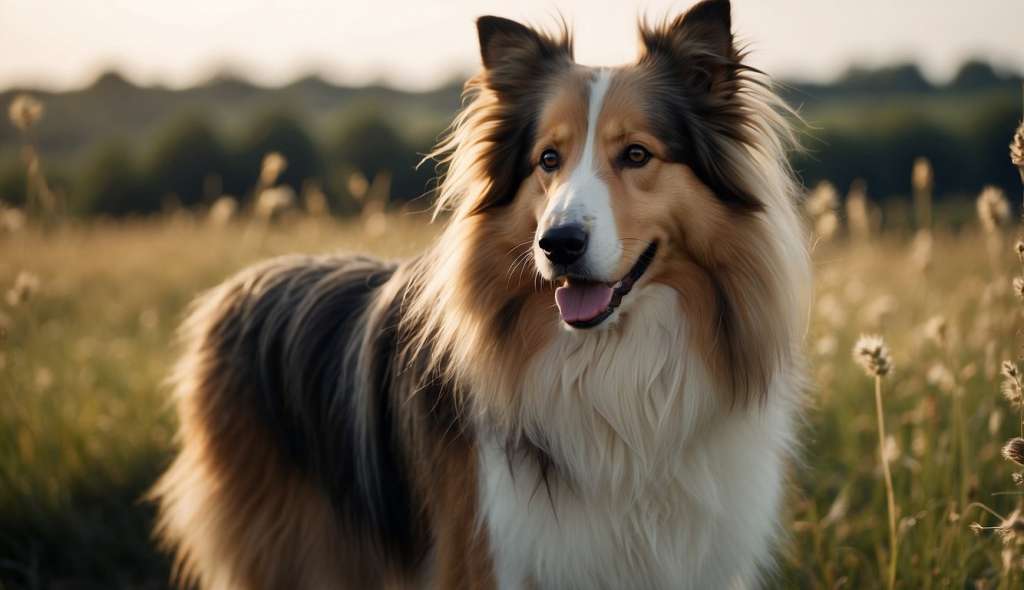Is Your Dog Sneezing Up a Storm? Tips for Dealing With Canine Hay Fever
This time of year, some dogs start sneezing up a storm as the flowers bloom and the pollen count rises. For canine companions with hay fever, life can get pretty ruff between the incessant sniffling, runny noses and itchy eyes. But before you start dosing your dog up on antihistamines, read our handy guide on dealing with your pup’s pollen problems. We’ll look at natural remedies, tips for reducing exposure, when to see the vet and more. So if your furry friend is a bit of a snot monster right now, keep reading to discover ways to help both of you get through hay fever season with minimal sneezing and discomfort.
What Is Canine Hay Fever?
Allergy to Pollen

Canine hay fever, also known as canine allergic rhinitis, is an allergy to pollen and other airborne allergens. As the pollen count rises in the spring and summer, dogs with this allergy can experience severe sneezing, runny nose, and other unpleasant symptoms. The pollen from grasses, weeds, and trees are common culprits.
Irritated Airways
When a dog with canine hay fever inhales these airborne allergens, their immune system overreacts and produces antibodies to attack the allergens. This results in the release of histamine, which then leads to inflammation of the dog’s airways and nasal passages. The main signs are repetitive sneezing, nasal congestion, runny eyes, and irritation of the nose or skin.
Seasonal vs Perennial
Canine hay fever can be seasonal, perennial, or a combination of both. Seasonal allergies occur during peak pollen periods in the spring and summer. Perennial allergies are year-round, often caused by allergens found indoors like dust mites, moulds, and pet dander. The severity of symptoms can vary from mild to quite severe, greatly impacting a dog’s quality of life.
Diagnosis and Treatment
If your dog is sneezing frequently, the first step is to take them to the vet for an examination and diagnosis. The vet may do skin prick or blood allergy testing to determine the specific allergens. Common treatments include antihistamines, decongestants, immunotherapy, and avoiding the allergens when possible. With the right treatment and care, dogs with canine hay fever can get relief from their uncomfortable symptoms and breathe easy.
Common Symptoms of Hay Fever in Dogs
Dogs with hay fever often suffer from a variety of unpleasant symptoms. The most obvious sign is repeated sneezing. If your dog is sneezing frequently, especially on days with high pollen counts, hay fever could be the culprit.
Excessive scratching
Dogs may scratch their face, ears, and paws excessively in an effort to relieve the irritation caused by hay fever. The skin around the eyes or ears may become red and inflamed from constant scratching. ### Runny nose and watery eyes
A runny nose, often with a watery discharge, is common in dogs with hay fever. Their eyes may also water, and the whites of the eyes may become red.
Coughing and wheezing
Some dogs experience coughing, gagging, or wheezing during hay fever flare-ups. The pollen and other airborne allergens can irritate the throat and airways, triggering these respiratory symptoms. ### Lethargy and restlessness
The discomfort from hay fever may lead to changes in your dog’s behaviour and activity levels. Some dogs become lethargic and want to sleep more, while others may seem restless or irritable.
If your dog is showing several of these symptoms, especially during the spring and summer months, they may have hay fever or another seasonal allergy. The good news is there are many effective treatments available to relieve your dog’s symptoms and make them more comfortable. Consult with your vet, who can diagnose the problem, determine what your dog may be allergic to, and recommend an appropriate treatment plan.
Which Dog Breeds Are Prone to Hay Fever?
Certain dog breeds are more susceptible to developing hay fever and seasonal allergies. This is often due to their physical attributes and genetic predispositions.
Retrievers and Terriers

Breeds with long, heavy coats like Retrievers and Terriers tend to struggle more with hay fever. Their dense fur traps more pollen, dander, and other airborne allergens, allowing them to build up and irritate the skin. Retrievers, especially Labradors, are also particularly prone to atopic dermatitis which can flare up during high pollen periods.
Brachycephalic Breeds

Short-muzzled dogs like Bulldogs, Pugs, and Boston Terriers have narrow nasal passages that can become easily congested when exposed to airborne allergens. This makes them more susceptible to symptoms like sneezing, wheezing, and nasal discharge. These breeds may require antihistamines and decongestants, as well as lifestyle changes during peak pollen seasons.
German Shepherds and Collies

Large breed dogs with double coats like German Shepherds and Collies seem especially prone to hay fever and seasonal allergies. While their long fur provides insulation, it also traps environmental allergens in contact with the skin for longer. These breeds are also at higher risk of ear infections, which can be exacerbated by hay fever. Frequent ear cleaning and medicated ear drops may be required during flare-ups.
Some other breeds that frequently struggle with hay fever and seasonal allergies include Schnauzers, Irish Setters, Soft Coated Wheaten Terriers, and Cocker Spaniels. If your dog shows symptoms of sneezing, runny eyes or nose, coughing, wheezing or irritated skin during spring and summer, they may have developed hay fever or seasonal allergies, especially if they are of a breed prone to atopic conditions. An elimination diet trial and allergy testing can help determine the specific allergens, so you can make environmental changes to reduce flare-ups.
When Does Hay Fever Season Start for Dogs?
Hay fever season typically begins in late spring and continues through summer for most dogs. The specific start date varies each year and depends on factors like weather and pollen levels in your local area.
Spring Pollens

Once the weather starts to warm up and plants begin blooming in spring, pollen levels rise. Common springtime allergens for dogs include tree pollens like oak, elm, and birch. As these trees start producing pollens, usually beginning in April or May, dogs may start exhibiting symptoms of hay fever like sneezing, runny nose, and itchy eyes.
Summer Pollens
Grass pollens tend to peak during the summer months, from May through August in many places. Grasses like Bermuda grass, Johnson grass, and bluegrass release pollens that can trigger allergic reactions in dogs. Weeds such as ragweed, nettle, and dock also pollinate during summer and may lead to hay fever in sensitive dogs.
Autumn Pollens
Although less common, some dogs may experience hay fever symptoms again in the fall when pollens from weeds like mugwort and sagebrush are released. Ragweed pollen levels also tend to spike again in September. If your dog’s symptoms return or worsen in the autumn, they may be allergic to these fall pollens.
Some dogs only show signs of hay fever during one particular season, while others may be affected year-round by multiple different pollens and allergens. The best way to determine when your dog’s hay fever season starts is to track their symptoms relative to when plants in your area begin flowering and note which seasons seem to flare up their allergies the most. Keeping a symptom diary or log can help identify patterns to better prepare for and manage your dog’s hay fever.
Diagnosing Canine Hay Fever
When your dog begins sneezing repeatedly, especially during spring and summer, it could signal that he has developed hay fever. The medical term for hay fever in dogs is canine atopic dermatitis. The most common symptoms are excessive sneezing, runny nose, and watery eyes. Some dogs may also develop skin irritation or ear infections.
To determine if your dog’s symptoms are due to hay fever and not another condition, the vet will evaluate his medical history and environment. They will try to identify any potential allergens that could be triggering a reaction. Common allergens for dogs include pollen, dust mites, mould, and pet dander.
Skin Prick Test
A skin prick test, also known as an intradermal test, may be performed to check for specific allergies. During this test, small amounts of potential allergens are injected into the dog’s skin. If he reacts to any, it indicates an allergy. This helps the vet determine the underlying cause of the symptoms.
Blood Test
A blood test to check for allergen-specific IgE antibodies may also be done. High levels of certain antibodies point to an allergy to substances like pollen, dust mites, moulds or pet dander. This can confirm a diagnosis of canine atopic dermatitis.
Elimination Diet
For dogs with year-round hay fever symptoms, a dietary allergy could be a contributing factor. The vet may recommend an elimination diet trial, where the dog is fed a hypoallergenic diet for at least 8 to 12 weeks. If the symptoms clear up, it suggests a food allergy. The usual diet is then reintroduced one item at a time to identify the problematic ingredients.
Dietary changes, medication, immunotherapy, and avoiding allergens can help relieve your dog’s hay fever symptoms and improve his quality of life, especially during allergy season. With the right treatment plan, the sneezing and other problems should subside, leaving you both resting easier.
Natural Remedies for Dog Hay Fever
If your dog prefers natural remedies over medication, there are several options you can try to relieve their hay fever symptoms.
Local Honey

Raw, unfiltered honey from local beekeepers may help desensitise your dog to the pollens in the air that are causing their symptoms. The small amounts of pollen in the honey can build up immunity over time. Give your dog 1/2 teaspoon of honey twice a day. You may need to adjust the dosage for small or large breeds. It can take several months of regular use to become fully effective.
Essential Oils
Certain essential oils have natural antihistamine properties and can help reduce inflammation in the respiratory tract. Peppermint, lavender and lemon oil are good options. Add 2-3 drops of an essential oil to a diffuser in the areas where your dog spends most of their time. You can also dilute a few drops of peppermint or lavender oil in a tablespoon of carrier oil like jojoba oil or sweet almond oil and rub it into your dog’s ears and paws.
Nettle Tea
Stinging nettle leaf is a natural antihistamine and may help relieve symptoms like sneezing, runny nose and itchy eyes. Brew a cup of nettle tea, let it cool and add it to your dog’s food or water. You can find nettle tea bags or loose leaf to make a tea for your dog. Nettle is generally very safe, but you may want to check with your vet first, especially if your dog is on any other medications.
Quercetin
Quercetin is a flavonoid found in many fruits and vegetables, like apples, broccoli and leafy greens, that has natural antihistamine effects. It helps reduce inflammation in the body and inhibits the release of histamines. Quercetin supplements for dogs are available in tablet or capsule form. The typical dosage is about 5 to 20 milligrammes per pound of body weight twice a day. Quercetin can interact with some medications, so check with your vet first.
These natural remedies may provide some relief from your dog’s hay fever symptoms, especially when combined. But if symptoms are severe or persist for more than a week, consult your vet regarding other treatment options. An allergy test and allergy shots may help address the underlying cause.
Medications to Treat Canine Hay Fever
Antihistamines
Antihistamines, like Benadryl, are commonly used to relieve allergy symptoms in dogs. They work by blocking the effects of histamine in the body that causes inflammation and irritation. Antihistamines can reduce symptoms such as sneezing, runny nose, and itchy eyes. The most common side effects are drowsiness and lack of appetite. You’ll want to give the proper dosage for your dog’s weight as directed by your vet.
Nasal Sprays
Nasal sprays, such as corticosteroids, can help reduce inflammation in the nose. They work by constricting blood vessels in the nose to decrease swelling. Nasal sprays need to be used regularly to be effective and may take several days of use to start working. Possible side effects include nosebleeds and nasal dryness. Nasal sprays can be a good option for dogs that don’t tolerate oral medications well.
Eye Drops
Eye drops, such as antihistamine eye drops, can help relieve irritated, itchy eyes from allergies. They work quickly to reduce redness and provide relief from eye irritation. The drops are administered directly into the eyes, so some dogs may not tolerate them well. Possible side effects are eye irritation, burning, and stinging. Eye drops may need to be used in combination with other medications to relieve symptoms in other areas of the body.
Immunotherapy
For dogs with severe allergies, immunotherapy may be an option. Immunotherapy works by injecting small amounts of the allergen(s) that your dog is allergic to in order to help build up immunity. The allergen extracts are customised based on the results of allergy testing. Immunotherapy can be very effective but also expensive. It requires injections over the course of months to years to significantly reduce allergy symptoms. Side effects are usually minimal but may include soreness at the injection site.
With the variety of treatment options available, there are many ways to keep your dog comfortable during hay fever season. By working closely with your vet, you can develop an effective treatment plan to get your dog’s allergies under control.
Tips to Reduce Exposure During Hay Fever Season
To help reduce your dog’s hay fever symptoms during peak pollen seasons, there are some practical steps you can take.
- Try keeping your dog indoors as much as possible on high-pollen days, especially when the pollen count is highest between 5 am to 10 am.
- When outside, you can rinse your dog off after being outside to wash away any allergens in their fur before they come into the house.
- Bathe your dog at least once a week using a hypoallergenic shampoo to keep their skin and coat clean.
- Consider walking your dog during off-peak pollen times, like later in the evening.
- You should also keep windows closed in your home and car and use an air purifier with a HEPA filter to capture airborne pollen inside.
- Vacuum frequently using a vacuum with a HEPA filter to minimise allergens in the home.
- Wipe your dog’s paws when they come inside to prevent them from tracking pollen and other allergens into the house.
- It’s also a good idea to consult your vet about possible allergy medication for your dog to help reduce symptoms during peak hay fever seasons. Antihistamines or decongestants may help provide relief from sneezing, runny nose or itching.
- In some cases, allergy shots or other immunotherapies may be options to help desensitise your dog to certain pollens over time. These can be very effective but require testing to determine which allergens your dog is reactive to, followed by a series of injections over several months to build up immunity.
- Keeping your dog comfortable during hay fever season may require some trial and error to find what works for your canine companion. But with the proper precautions and treatment, you can get your dog’s symptoms under control and back to enjoying the great outdoors.
Conclusion
So there you have it, dog owners. Canine hay fever might seem like just an annoyance, but it can seriously impact your pup’s quality of life. The good news is there are plenty of remedies out there to explore, from natural solutions to over-the-counter medications. While trial and error may be needed to find just the right treatment plan for your sneezy doggo, a bit of patience and persistence will likely lead you to something that provides relief.
With some tweaks to their environment and routine, along with the right meds, you can help your allergic buddy breathe easy again. Just remember—frequent paw massages are always appreciated for being such a good sport through all the sniffles and sneezes!
FAQ’s About Canine Hay Fever
Canine hay fever, also known as canine atopic dermatitis, is an allergic reaction that causes dogs a lot of discomfort. Many dog owners have questions about the causes and treatments for this condition. Here are some of the most frequently asked questions and their answers:
What causes canine hay fever?
Canine hay fever is usually caused by an allergy to environmental allergens like pollen, mould, dust mites, and dander. The dog’s body overreacts to these allergens, causing an inflammatory response. The most common allergens are pollen from trees, grasses, and weeds.
What are the symptoms of canine hay fever?
The symptoms of canine hay fever include:
- Excessive sneezing and runny nose: The dog may sneeze frequently and have a runny, watery discharge from the nose.
- Red, itchy eyes: The dog’s eyes may become red, swollen, and itchy. They may rub their eyes frequently.
- Coughing and wheezing: Some dogs may cough, wheeze, or have difficulty breathing due to irritation of the airways.
- Itchy, irritated skin: The dog may scratch, lick, or chew at their skin, especially on the face, ears, paws, and groyne area. Their skin may become red, inflamed, and develop hot spots.
How is canine hay fever diagnosed and treated?
Canine hay fever is usually diagnosed based on the dog’s symptoms and history. Skin tests or blood tests can be done to determine specific allergens. Treatment options include:
- Antihistamines and corticosteroids: Oral medications such as Benadryl, hydroxyzine, or prednisone help reduce inflammation and control symptoms.
- Allergy shots: Hyposensitization or “allergy shots” work by building up the dog’s tolerance to the allergens over time.
- Dietary changes: Changing to a hypoallergenic dog food or limiting exposure to certain allergens in the home may help.
- Bathing and moisturising: Frequent bathing and moisturising the dog’s skin helps eliminate allergens and relieve irritation.
By understanding the causes and symptoms of canine hay fever, and the available treatment options, dog owners can work with their vet to develop an effective treatment plan so their dog can feel more comfortable during allergy season.

1 Comment
Comments are closed.